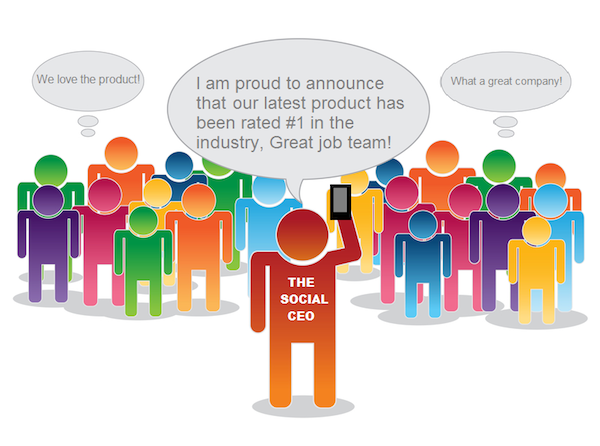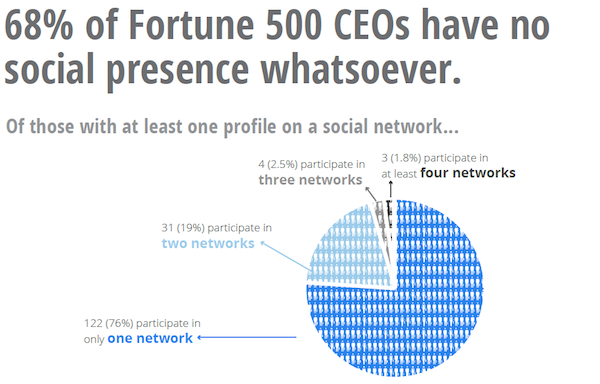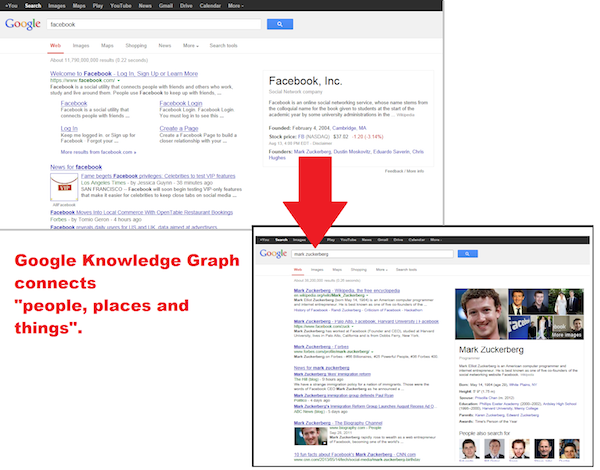
A recent study revealed that 68 percent of Fortune 500 CEOs have absolutely no presence in social media.

Image credit: 2013 Social CEO Report, CEO.com
Here are some insights on social media and the CEO:
- 68 percent of CEOs remain absent, with no social media presence.
- Two social networks have emerged as the preferred choice among social CEOs: LinkedIn and Twitter.
- CEO participation on Twitter, LinkedIn, and Google+ has increased over the past year.
- CEO participation on Facebook decreased over the past year.

Image Credit: 2013 Social CEO Report, CEO.com
Why Does the CEO Shy Away From Social Media?
Why do so many CEOs fail to recognize the responsibility they have to lead the way in today’s transparent, social marketplace?
Four possible reasons why the CEO may shy away from social media.
- Not enough time
- Uncomfortable with transparency
- Greater risk
- Resistance to change
Should a CEO be concerned with transparency? Yes. Does social media require some level of commitment of time? Yes.
CEOs aren’t cultivating opportunities available in social media. This graphic illustrates that even social CEOs aren’t fully engaged as most have fewer than 100 connections on LinkedIn.

Is there greater risk in social media? Yes and no.
There is risk when a CEO does engage in social media. However, audiences are human and much more likely to forgive errors or offenses when some good will has been established in the context of availability.
Resistance to change is human. However, if a CEO is resistant to change, there may be much more to worry about than social media.
The inability to adapt to emerging market conditions will impact the overall sustainability of a business or brand, as revealed by Faisal Hoque in his book “The Power of Convergence: Linking Business Strategies and Technology Decisions to Create Sustainable Success”.
Bottom line, none of these reasons should keep a CEO away from one of the most visible channels of interaction between the brand and its customers – social media.
There are two additional possible reasons why CEOs resist social media.
- The CEO does not understand how vital social is to competing in today’s digital economy.
- The CEO doesn’t care.
Let’s hope it isn’t the latter. My experience tells me that most CEOs view social media as a function of marketing and PR that has not quite proven itself to be worthy of executive attention. However, once the dots are connected and they fully understand the role social plays in supporting other vital functions of the business; marketing, customer service, PR, HR, sales, investor relations, etc., it is easier for them to understand why they must lead the charge.
Selling Social to the CEO
There are compelling reasons for the CEO to be engaged in social. Because CEOs operate on a different level, it is imperative that the value proposition be based on impact to the bottom line.
1. The Social CEO is an Asset
The CEO that understands the landscape they compete in become a greater asset to the companies they lead. Not just to win the hearts and minds of customers, but also those of employees, media and investors, now that the Securities and Exchange Commission (SEC) allows publicly traded U.S. companies to distribute financial information via social media when accompanied by required notifications.
- 87 percent of customers say online social interaction with a company “positively impacted” their likelihood to purchase from that company according to findings from a recent study published by JD Power and Associates which emphasized how brands can no longer adopt a trial-and-error approach to social media.
- 52 percent of employees at companies with social CEOs say that their leader’s participation makes them feel inspired.
- 46 percent of employees led by social CEOs say leader participation makes them view the company as technologically advanced.
- Social CEOs are viewed to be better leaders according to a study released by Weber Shandwick.
2. The CEO, Social Media, and Search
Convincing the CEO of the importance of social media may require you to Sell SEO to the C-Suite. It is imperative that the CEO fully understand the digital space they operate in.
Most C-level executives are unaware of the impact their activity, or lack thereof, has on how their business will appear in search engine results. This may be in part due to historic way search is viewed – through a prism of keywords. Search engines are connecting the “people, places and things” (how Google defines Knowledge Graph) more than ever, making the CEO more visible than ever.

Highly engaged executives contribute to brand visibility, amplifying the reach of the brand and often elevating the brand in organic search rank. Media coverage will also appear in search.
Unfortunately, controversy, bad behavior, and negative press also appear in search engine results. It’s human nature to be drawn to drama and controversy, so bad news can spread fast, meaning negative press can often replace years of positive media coverage.
3. Social Media Offers Unprecedented Access to Audiences
An engaged CEO is an asset to the brand. Fortunately, a few CEOs fully understand today’s digital, social economy and are blazing the trail in social media, like Virgin CEO Richard Branson, recently named Top Social CEO by World of CEOs. And, he’s not alone.
A number of social CEOs aren’t just going through the motions. They are fully engaged with audiences. LinkedIn recently listed the top 30 Social CEOs:

Image Credit: Steve Tappin/LinkedIn
4. What Doesn’t Come Natural Can Be Learned
CEOs are human. Humans make mistakes. The CEO, or anyone entering social media, must be properly trained if they haven’t naturally evolved as an active participant in the space over recent years.
Having provided media training to prepare executives for interaction with the media and press during events, promotions, or times of crisis, the same approach translates nicely to social media.
The CEO can be guided to attain awareness of the space, sensitivity to written word in social context, manage their voice, as well as the permanence and impact of every interaction, whether it was intended to be public, or not.
When a CEO isn’t cognizant or doesn’t have proper respect for how their actions will impact the brand, the risk of damaging the business they are responsible for leading is elevated. When they have evolved with the space, they are likely to have an inherent comfort with social engagement. If they have not been active, proper training will prepare the CEO to engage with confidence and pay for itself a thousand times over.
5. The CEO in the Land of Owned, Earned, and Paid Media
Intentionally or not, in a moment the CEO can make or break years of effort to build a brand.
Investing in SEO, social media, marketing, PR, and advertising will never prevent the impact that earned media will have on the brand. Earned media represents what everyone else is saying about the brand. In a moment, bad news, a slip of the tongue, or bad public behavior can quickly displace positive brand sentiment with bad results in search, social media, and in the media.
This was demonstrated recently in the wake of a recent event when Tim Armstrong, CEO of AOL spoke the words “You’re fired” in a conference call with 1,000 employees.

LEAKED AUDIO: Listen to AOL CEO Tim Armstrong Fire a Patch Employee in Front of 1,000 Coworkers (AOL)
Quite a headline isn’t it? As you might expect, reaction to the event is quite visible to anyone looking at the brand, or the CEO after the audio of the conference call, posted by blogger Jim Romenesko, went viral.
On Friday, August 9th, two minutes into a conference call expected to cover layoffs, and just moments after saying he didn’t care what the press says and that leaked information didn’t bother him, Armstrong abruptly fired Abel Lenz, a Patch employee, during a conference call with approximately 1,000 employees listening in.

That’s all it took. Two words abruptly inserted, mid-sentence in a conference call with employees, and the ripples could be found throughout the web.
A simple Google search reveals how the event has impacted how AOL appears in search. This reflects how opinion and coverage of the event, covered extensively on social networks, news sites and blogs, including the CEOs subsequent apology a few days after the event, has dominated interaction with the brand.
With a reported 1 million+ downloads in the first few days following the event, spurred on by a stream of tweets, blog posts, coverage by the Wall Street Journal, San Francisco Chronicle, TechCrunch, Chicago Tribune, New York Post, the Hollywood Reporter, and countless other sources, the act has become a permanent part of the brand story, as well as that of the CEO.

6. CEO Represents Two Brands
Such events impact two brands; the company and their own personal brand. Every professional is responsible for their own brand, as well as that of the companies or organizations they represent. This distinction is vital for the CEO to understand, as many will lead more than one corporate entity throughout the course of their career.
The Social CEO may be a rarity now. However, as social media engagement continues to increase, including half of American adults over the age of 65, the pull from customers, employees, investors, and media can be expected to make the Social CEO among the most effective, in-demand and powerful figures in business.








